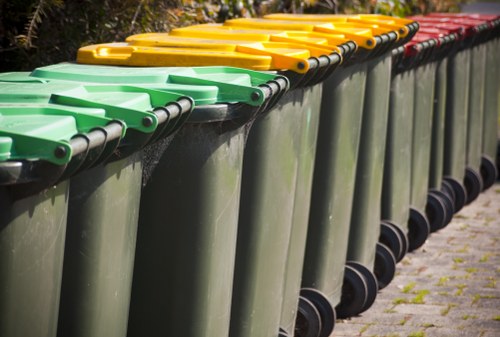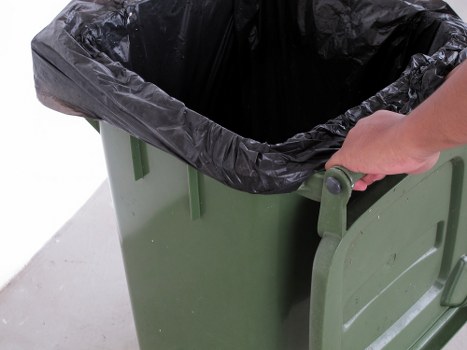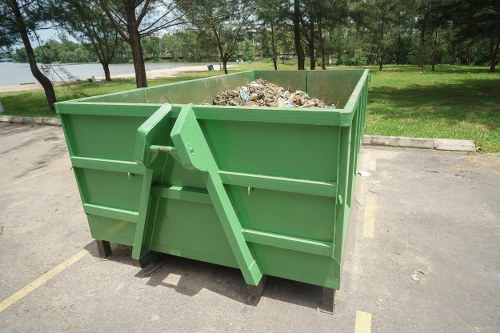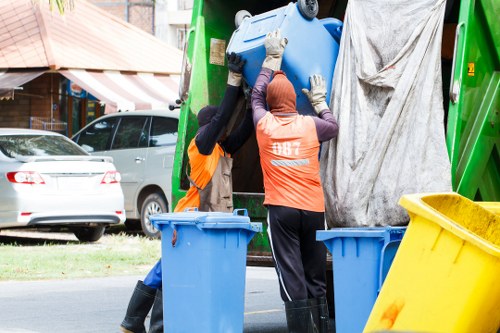Efficient Large Item Collection in White Goods Recycle
Introduction to White Goods Recycling

In today’s environmentally conscious society, the importance of recycling white goods cannot be overstated. White goods, such as refrigerators, washing machines, and dishwashers, are substantial household items that require proper disposal to minimize environmental impact.
Large item collection services play a crucial role in the white goods recycling process. They ensure that these bulky appliances are collected safely and responsibly, adhering to recycling standards and regulations.
Understanding the process and benefits of large item collection in white goods recycle can help consumers make informed decisions and contribute to sustainability efforts.
The Importance of Recycling White Goods

Recycling white goods not only conserves valuable resources but also reduces landfill waste. Many components of white goods, such as metals and plastics, can be reclaimed and reused, significantly lowering the demand for new materials.
Additionally, recycling helps in minimizing the carbon footprint associated with the production of new appliances. By repurposing existing materials, the energy required for manufacturing is substantially reduced.
Moreover, proper disposal of white goods prevents hazardous materials, like refrigerants and heavy metals, from contaminating the environment, ensuring a safer and healthier ecosystem.
Services Offered in Large Item Collection

Large item collection services typically offer a range of solutions tailored to meet the diverse needs of consumers. These services include the pick-up, transportation, and recycling of various white goods.
Many providers offer scheduled collections, allowing customers to arrange pick-up times that fit their schedules. This convenience is essential for individuals who may not have the means to transport bulky items themselves.
Some services also include on-site removal, where technicians handle the disassembly and removal of appliances, ensuring a hassle-free experience for the customer.
Benefits of Professional Collection Services

Opting for professional large item collection services offers numerous advantages. Firstly, it ensures that appliances are recycled in compliance with environmental regulations, mitigating legal risks for consumers.
Professional collectors are equipped with the necessary tools and expertise to handle and transport large appliances safely, preventing damage to both the items and property.
Furthermore, using reputable collection services supports the recycling industry, promoting the development of sustainable practices and innovations in waste management.
Steps Involved in the Recycling Process

The recycling process of white goods involves several key steps to ensure efficiency and environmental safety.
- Collection: Large item collection services gather the appliances from designated locations.
- Transportation: Items are transported to recycling facilities using specialized vehicles.
- Disassembly: Appliances are carefully disassembled to separate recyclable materials.
- Material Recovery: Metals, plastics, and other materials are extracted and processed for reuse.
- Waste Disposal: Non-recyclable components are disposed of responsibly, adhering to environmental guidelines.
Each step is meticulously executed to maximize the recovery of materials and minimize environmental impact.
Choosing the Right Collection Service
When selecting a large item collection service for white goods recycle, several factors should be considered to ensure reliability and effectiveness.
- Reputation: Look for services with positive reviews and a proven track record in recycling.
- Certifications: Ensure the provider adheres to industry standards and holds relevant environmental certifications.
- Pricing: Compare pricing structures to find a service that offers fair rates without compromising quality.
- Customer Support: Choose a service that offers excellent customer support and clear communication throughout the process.
- Environmental Commitment: Select providers committed to sustainable practices and transparent recycling processes.
By evaluating these aspects, consumers can make informed choices that align with their recycling goals and values.
Environmental Impact of Recycling White Goods
Recycling white goods has a profound positive impact on the environment. It reduces the need for extracting new raw materials, thereby conserving natural resources and preserving ecosystems.
Additionally, recycling minimizes energy consumption compared to the production of new appliances from virgin materials. This reduction in energy use translates to lower greenhouse gas emissions, contributing to climate change mitigation.
Furthermore, by diverting white goods from landfills, recycling helps in decreasing methane emissions and preventing soil and water contamination from hazardous substances present in old appliances.
Economic Advantages of Recycling
Beyond environmental benefits, recycling white goods also offers significant economic advantages. The recycling industry generates employment opportunities in collection, processing, and manufacturing sectors, boosting local economies.
Reclaimed materials from white goods can be sold to manufacturers, creating a circular economy that promotes sustainable growth and reduces dependency on imported raw materials.
Consumers can also save money through recycling initiatives that offer incentives or discounts on new appliances when old ones are recycled, encouraging responsible disposal habits.
Innovations in White Goods Recycling
The recycling of white goods is continually evolving with technological advancements that enhance efficiency and effectiveness.
Automated sorting systems improve the precision of material separation, ensuring higher quality recycled materials. Innovations in material recovery techniques allow for the extraction of rare and valuable materials, increasing the economic viability of recycling processes.
Additionally, the development of eco-friendly recycling methods reduces the environmental footprint of recycling facilities, making the process more sustainable and less resource-intensive.
Challenges in Large Item Collection
Despite its benefits, large item collection in white goods recycle faces several challenges that need to be addressed to optimize the process.
- Logistical Issues: Coordinating the collection and transportation of bulky items requires efficient logistics and resources.
- Regulatory Compliance: Navigating the complex web of environmental regulations can be daunting for collection services.
- Consumer Awareness: Increasing public awareness about recycling benefits is essential to drive participation.
- Cost Management: Balancing affordability for consumers while maintaining profitable operations for providers is a constant challenge.
- Technological Limitations: Advancements are needed to improve the recycling process and handle diverse appliance types effectively.
Addressing these challenges requires collaboration between governments, businesses, and consumers to create a seamless and efficient recycling ecosystem.
Best Practices for Consumers
Consumers play a vital role in the success of large item collection in white goods recycle. Implementing best practices can enhance the efficiency and effectiveness of the recycling process.
- Proper Preparation: Ensure appliances are clean and free from personal data before collection to facilitate smooth recycling.
- Scheduling Ahead: Book collection services in advance to secure convenient pick-up times and avoid delays.
- Disassembling Where Possible: Remove detachable parts, such as doors or drawers, to streamline the recycling process.
- Choosing Certified Providers: Select collection services that are certified and adhere to environmental standards.
- Stay Informed: Keep abreast of local recycling regulations and initiatives to participate effectively.
By following these practices, consumers can contribute to a more sustainable and efficient recycling system.
Future Trends in White Goods Recycling
The future of white goods recycling looks promising with ongoing advancements and increasing global focus on sustainability.
Emerging technologies, such as artificial intelligence and machine learning, are set to revolutionize the sorting and processing of recyclable materials, enhancing precision and speed.
There is also a growing trend towards designing appliances with recycling in mind, using materials that are easier to disassemble and recycle, thus simplifying the overall recycling process.
Conclusion
Large item collection in white goods recycle is a pivotal component in the journey towards a sustainable future. It not only mitigates environmental impact but also fosters economic growth through the recycling industry.
By understanding the importance, benefits, and challenges associated with white goods recycling, consumers and service providers can work together to enhance the efficiency of the process.
Embracing responsible recycling practices ensures the conservation of resources, reduces waste, and contributes to a healthier planet for future generations.
Contact us today to learn more about our large item collection services and join us in making a positive environmental impact.